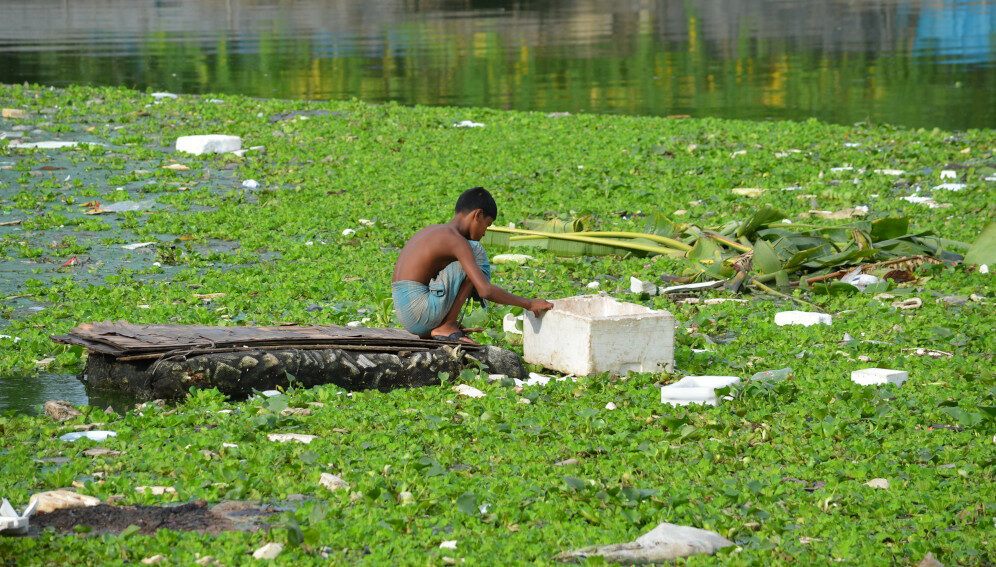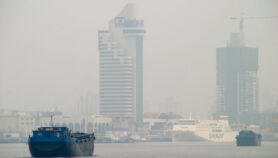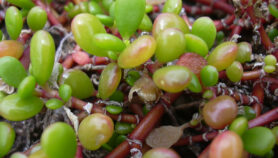02/11/22
Microplastics threaten ecosystems of Dhaka rivers

By: Sanjeet Bagcchi
Send to a friend
The details you provide on this page will not be used to send unsolicited email, and will not be sold to a 3rd party. See privacy policy.
[NEW DELHI] Tiny plastic particles have been found in abundance in the surface water and underlying sediments of several lakes and peripheral rivers of Dhaka, according to a new study which researchers say sheds light on the environmental risks of microplastic pollution.
Published October in the Journal of Hazardous Materials Advances, the study found that the average volume of microplastic particles in water and sediment samples taken from the Bangladesh capital’s rivers and lakes is around 36,000 microplastics per cubic meter and 13,607 microplastics per kilogram of dry weight.
The minute plastic particles with diameters lower than five millimetres persist in the environment, including in the air, soil, water and sediments of ocean, rivers and lakes. Coming in various shapes and forms such as fibres, beads and foams, they are typically derived from personal care products, synthetic textiles, bags, cups and vehicle tyres.
“Among the 19 sampling sites, the presence of microplastics in sites like Gulshan Lake, Buriganga River and Tongi Khal poses high ecological risks to freshwater biota”
Fahmida Parvin, Jahangirnagar University
“It is clearly revealed by the present study that both urban rivers and lakes contain very high amounts of different types of microplastics,” says Shafi Mohammad Tareq, study co-author and professor at the Jahangirnagar University in Dhaka.
Tareq blames the situation on poor plastic waste management resulting in microplastic pollution of urban rivers and lakes. “We need a workable plastic waste management policy with strong legal enforcement,” he adds.
Fahmida Parvin, corresponding author of the study and associate professor at the Jahangirnagar University adds: “Among the 19 sampling sites, the presence of microplastics in sites like Gulshan Lake, Buriganga River and Tongi Khal poses high ecological risks to freshwater biota [animal and plant life of a specific place, period and habitat].”
According to the researchers, the sediments contain microplastics such as fibres and fragments while plastic foam has been found in water samples. Polymers identified in microplastic samples include polypropylene, polystyrene, nylon, and low-density polyethylene.
Investigators first reported detecting minute plastic beads and fragments, particularly polystyrene, in oceans in the early 1970s. The term microplastics came into wider use in the mid-2000s.
A World Wide Fund report says microplastic concentrations have crossed critical thresholds in several ecologically sensitive regions of the world including the Mediterranean, the East China and Yellow Seas and Arctic sea ice, with several more regions expected to follow suit in the coming years.
A review published October in Environmental Reviews suggests that microplastics, in the long run, impact biodiversity, productivity and the ecosystem. Microplastics relay various toxic elements to fishes, reptiles, amphibians, invertebrates and others.
The review suggests that microplastics have damaging effects when they enter the food chain. Fishes that consume microplastics show various adverse effects such as impaired liver functions, decreased activity and hormonal disorders, the study notes. Humans — the final consumer of the aquatic food chain — can find microplastics stored in their bodies, it adds.
Earlier studies have suggested that microplastics can damage human cells at a concentration of 10 micrograms per millilitre while at 20 micrograms per litre they can be associated with cytokine release (a feature of human immune response). Microplastics are also associated with oxidative stress in human cells, the review adds.
Diptendra Sarkar, a public health analyst and professor at the Institute of Post Graduate Medical Education and Research, in Kolkata, India, tells SciDev.Net that, microplastics can indirectly “collapse” the ecosystem.
“Infiltration of microplastics among humans in the ecosystem can have direct effects on human health — they are a potent factor in gene modification and thus, they substantially impact genetic activity in humans,” says Sarkar who was not connected with the new study.
This piece was produced by SciDev.Net’s Asia & Pacific desk.















